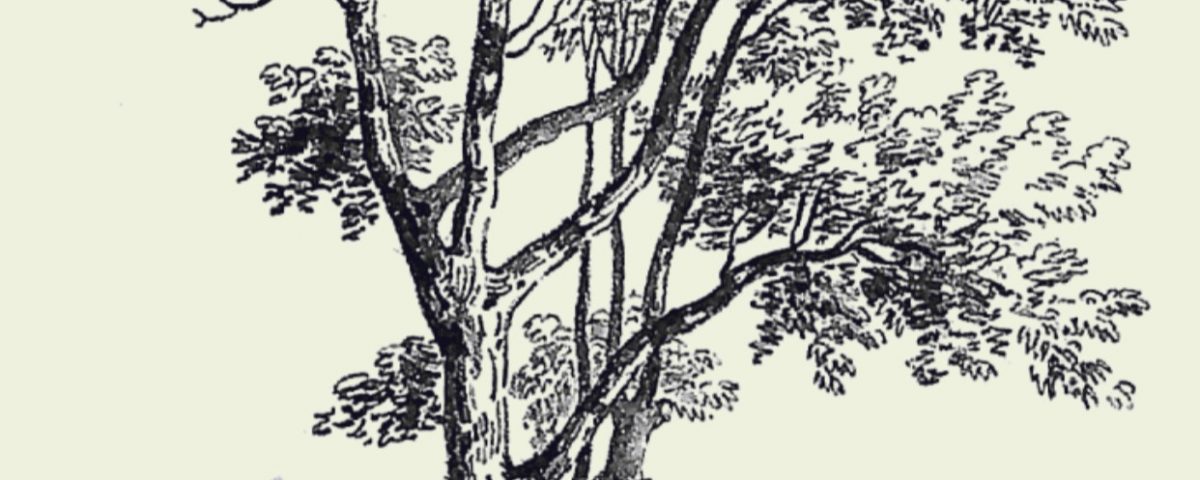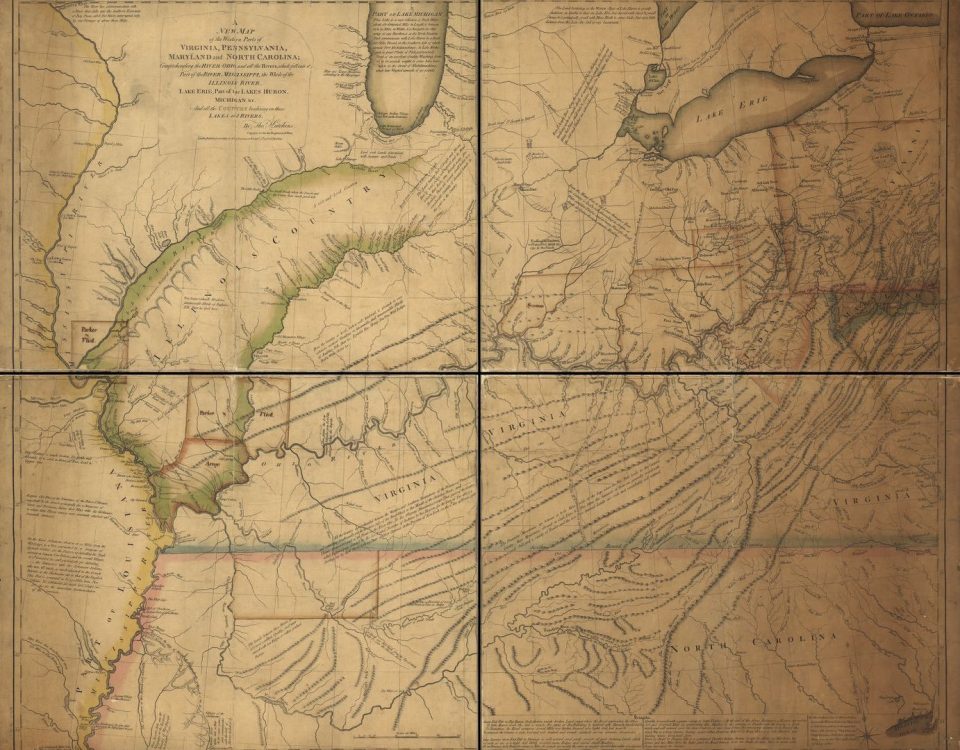The Old Apple Tree

A Narrative of Hardin’s Defeat: October 19, 1790
December 15, 2021
The Layout of Kekionga and the Surrounding Native Towns
December 15, 2021In keeping with the Johnny Appleseed festival in Fort Wayne – it seems appropriate to mention the Old Apple Tree that stood witness to many years of Kekionga’s history and early Fort Wayne’s history and predated John Chapman (Johnny Appleseed) himself. This tree was said to have existed long before the foundations of Fort Wayne were laid and to have had a trunk circumference of some 12 feet and was still bearing fruit into the 1850s. Apple trees are not native to North America so its likely it was planted by French traders when they first came to Kekionga and at least 100 years old when George Winters sketched it in 1848.
The Old Apple Tree survived the destruction of the villages and crops by Josiah Harmar’s forces in 1790 and then looked on as Josiah Harmar’s forces were themselves destroyed by Miami, Shawnee and Delaware warriors led by Little Turtle.Chief Richardville was said to have been born near the base of the tree in 1761.
During the Siege of Fort Wayne in 1812, a native had taken to climbing the Old Apple Tree to spy on the inner workings of the Fort and taunt the soldiers that were defending the fort during the siege. Reportedly the native would flap his arms and caw at the soldiers as if he was a big bird in the tree. A marksman from the fort took aim and knocked the spy down from the tree, killing him, at a distance of several hundred yards.While it’s precise location is unknown – it’s said to have been close to the intersection of Edgewater and Columbia, near the present day Conjure Coffee shop.
Benson John Lossing visited the tree in 1860 while doing research for his book, The Pictorial History of the War of 1812. Lossing wrote, “About three hundred yards westward from Harmar’s Ford, on the site of the In dian camp, was a venerable apple-tree, full of fruit, its trunk measuring fifteen feet in circumference. Under this tree Chief Richardville, to whom allusion has been made, was born a little more than a hund red years ago. It was a fruit – bearing tree then, and is supposed to have grown from a seed dropped by some French trader among these Twightwees, as the Miamis were called in early times. In the sketch of the apple-tree the city of Fort Wayne is seen in the distance. The spires on the left are those of the Roman Catholic Cathedral.”
The Old Apple Tree was finally felled by a storm in 1866.
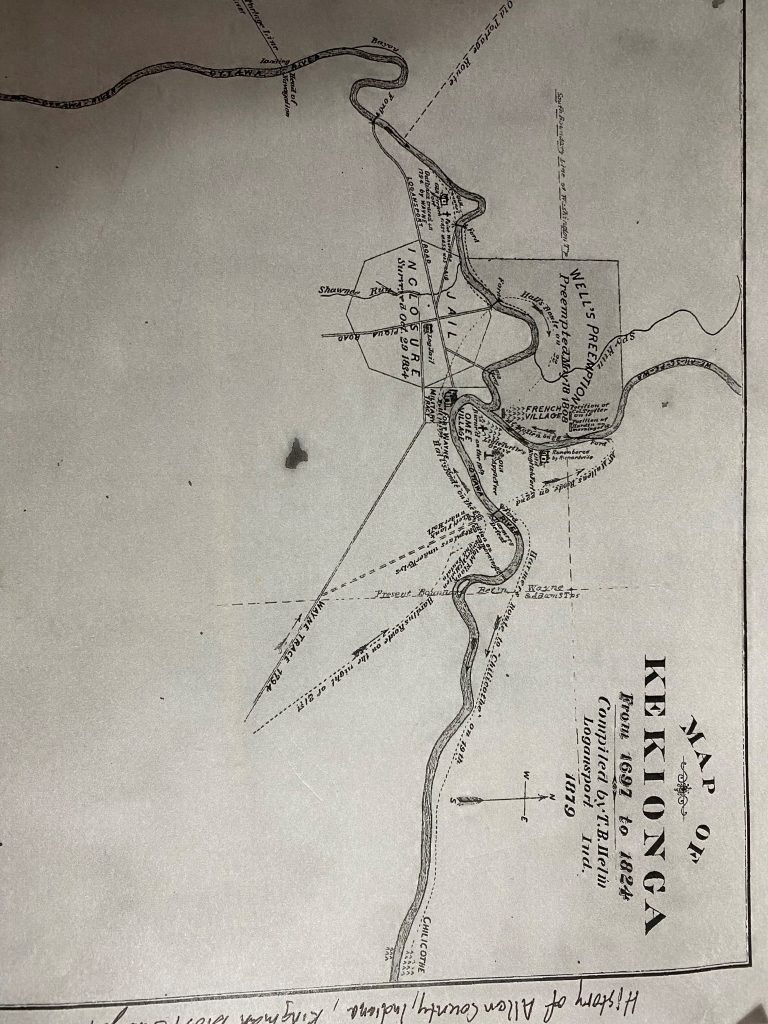
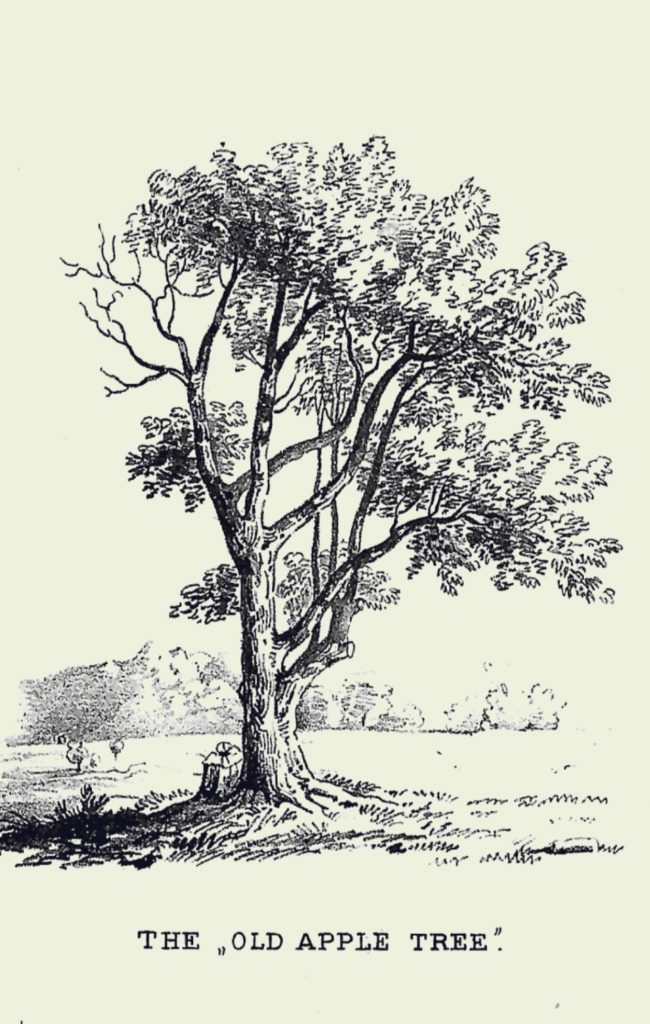
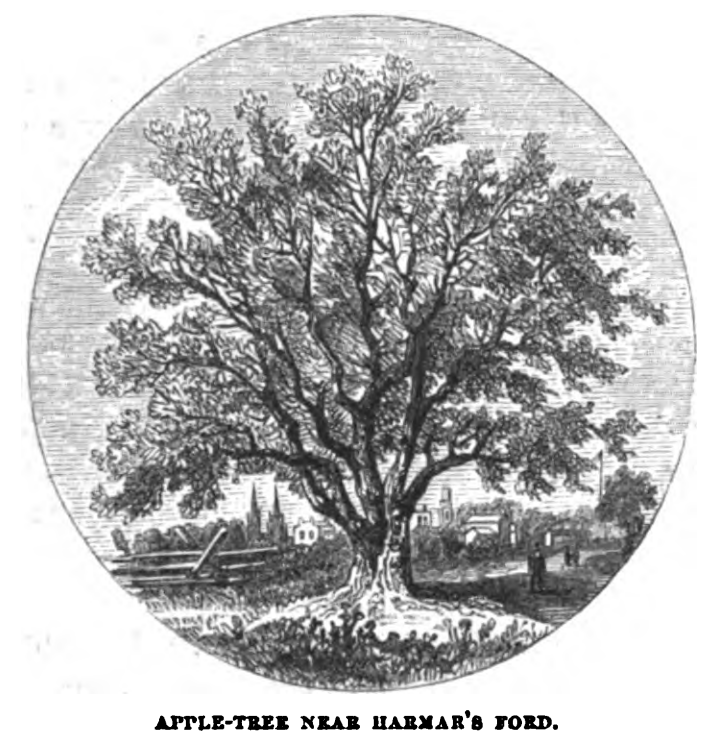
Benson John Lossing sketch – 1860

